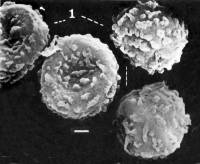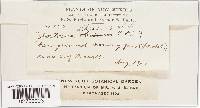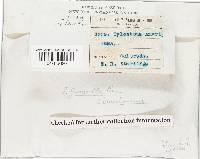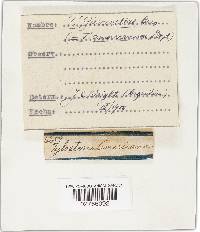
|
|
|
|
Family: Agaricaceae
|
Wright J.E. 1987. Bibliotheca Mycologia 113: 59. Tulostoma americanum Lloyd (Figs. 8-10;Pls. V: 1;XXXVI: 4). - The Tylostomeae, p. 20, tab. 80, figs. 5-9. 1906). Etym.: the name refers to its origin and distribution. Spore-sac globose deformed, up to 25 mm diam. Exoperidium indistinct, apparently thinly membranous, semideciduous, leaving a few remains adhered to the endoperidium as small whitish squamules. Endoperidium almost smooth ochraceous white. Mouth circular to elliptic, with a conspicuous lip which is sometimes more notorious than others, plane or very slightly projecting, frequently more than one stoma per peridium, large. Socket conspicuous, separated, disciform. Gleba ochraceous. Stem up to 60 x 5 mm, subwoody, the cortex cracking (and simulating fruitbodies of Stereum frustulosum), frequently distorted. Spores subglobose to ellipsoid, smooth to imperceptibly granulose under L.M. with a good oil-immersion lens, more visible mounted in Melzer's reagent, some vacuolate, 4-5.4 µm diam. When observed under SEM, the ornamentation appears as short and wide verrucae evenly distributed on the surface. Capillitium hyaline, septate, threads thick-walled and lumen visible to solid, 2.6-7 µm diam, disjointable, with blunt ends. Habitat: sandy soil.
Distribution: It appears restricted to SW United States and N Argentina. Holotype: United States, Colorado, Denver, leg. E. B. Sterling (Herb. Lloyd n° 24.713, BPI!; isotype PC!). Illustration: Lloyd (op. cit.). Remarks:We believe, as did Lloyd (loc. cit.) that this species is a mere American form of T. caespitosum, differing slightly in the nature of the spores, being on the whole T. americanum more robust. Lloyd also states that it is identical with T. kansense Peck (q.v.) which is T.volvulatum var. obesum. |
|
|
|




















